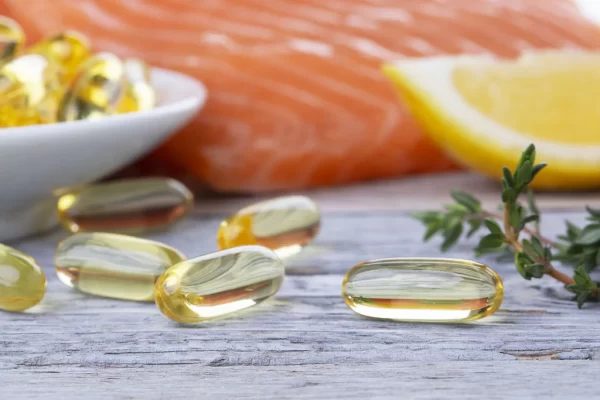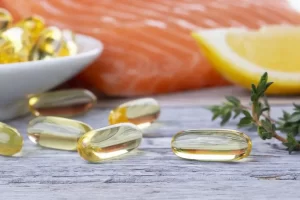How Can Omega 3 Help Balance Your Muscle And Fat Ratio?
5 min read
Omega 3 Tablets
Achieving a balance between bodybuilding and fat loss is a major problem for the majority of us. Maintaining the right ratio between lean muscle mass and body fat is the most frequent goal for most people when they go for exercises.
However, working out every day and having a healthy diet with constant efforts are not enough to find the balance among other things.
Fortunately, the latest research indicates that omega-3 fatty acids could be the vital component needed to solve the puzzle. The results of the latest research have clearly showed the tremendous benefit of omega-3s in terms of muscle building, fat metabolism, and overall body composition among others,
What is Omega-3?
Omega-3 are fatty acids. They are one of the most common types of polyunsaturated fats that are highly vital for human health. Omega 3 are referred to as “essential” because the body cannot produce these nutrients by itself and need to be obtained through the diet.
07 Ways Omega-3 Fatty Acids Balance Your Muscle & Fat
Omega-3 fatty acids are well-known for the many health benefits they offer such as heart health, cognitive performance, anti-inflammatory, and so on. Here are 7 effective ways of how adding omega-3 fatty acids in your routine can balance your muscle and fat ratio.
-
Muscle Protein Synthesis
Omege-3 fatty acids, which mainly contain EPA (eicosapentaenoic acid) and DHA (docosahexaenoic acid), are known to stimulate muscle protein synthesis significantly. This process is fundamental for the rehabilitation and remodeling of muscles after the workout-induced damage.
People who include omega-3-rich diets or supplements achieve better muscle regeneration and growth become more muscle than fat. The body gets these effects over time.
-
Supports Muscle Recovery
Intense workout is known to cause muscle soreness and inflammation. The capabilities of Omega-3s to reduce the inflammation rates after exercise and speed up the recovery process are well known.
In terms of recovery, omega-3 fatty acids provide support to pace up the recovery thereby enabling the individual to stick to the consistent exercise routines, which will indirectly lead to better muscle development and fat management.
-
Improves Muscle Strength
Besides the fact that omega-3s contribute to muscle repair and recovery, the omega-3 are also beneficial for increasing muscle strength.
Studies revealed that addition of omega-3 fatty acids into the system can enhance muscle function and performance which makes people use more strength during exercises.
It helps you achieve more from your efforts, giving you improved workout efficiency and consequently better body composition.
-
Regulates Insulin Sensitivity
Insulin sensitivity is a key factor that determines blood sugar level and influences energy turnover. Reduced insulin sensitivity leads to fat storage and impedes development of muscles.
Omega-3 fatty acids, in doing so, reduce systemic inflammation and improve cellular functions, and these contribute to improving insulin sensitivity. Through maximizing insulin sensitivity, omega-3s enable muscle cells to absorb nutrients swiftly for muscle growth while restricting fat storage mechanisms.
-
Promotes Fat Oxidation
Omega-3 fatty acids have demonstrated that they can increase your body’s capability of expending fat for the energy needed, which is in a biological term known as fat oxidation.
Burning the body fat faster with omega-3s is a great way to get a smaller body weight and better muscle-to-fat ratio for people. Moreover, along with suppressing appetite, omega-3s might also provide another means for tackling weight issues.
-
Boosts Exercise Performance
Proper exercise performance is a key factor for achieving fitness goals and maintaining a balanced muscle-to-fat ratio. The presence of omega-3 fatty acids has been proven to enhance various components of exercise with regards to endurance, speed, and recovery during and after the exercises.
Omega-3s help in growing a tolerant reception to exercises, enabling individuals to work out more successfully, and, ultimately, assist in better muscle development and fat management.
-
Modulates Hormonal Balance
Hormones are critical in maintaining a balance in muscle growth, fat loss, and body composition. The omega-3 fatty acids main goal is to maintain hormonal balance by influencing the activity of critical hormones that take part in muscle buildup and fat regulation e.g., testosterone and insulin.
Through modulation of hormonal pathways, omega-3s make available the environment required for muscle development and fat breakdown, therefore revitalizing the muscle-to-fat ratio.
How Can You Use Omega-3 to Balance Muscle and Fat Ratio?
- Include Fatty Fish in Your Diet — Sardines, mackerel, salmon, and trout are rich in omega-3 fatty acids as they are oilier. Make an effort to use one or more of these fish proteins in one or more of your daily meals. It will help you meet more omega-3 recommendations. Baking, roasting, or poaching fish are healthy cooking methods that do not cut the fatty acids.
- Add Flaxseeds and Chia Seeds to Your Meals — People who eat only a plant-based diet and want to strengthen their omega-3 intake can find flaxseeds and chia seeds as excellent foods to add to their meals. These seeds, however, can be just sprinkled over the top of salads, yogurt, smoothies, or oatmeal, which increases omega-3 fatty acids in the organism. Drying and grinding the seeds before consumption is a way to ease digestion leading to better absorption of nutrients.
- Use Omega-3-Rich Cooking Oils — Substitute the unhealthy oils, like vegetable oil and margarine, with omega-3-rich options, like extra virgin olive oil, walnut oil, or hemp seed oil. These fats give you a healthy heart rate. Include them for sautéing vegetables, topping salad dressings, or dipping bread in.
- Incorporate Omega-3-Rich Foods into Snacks — Eating some omega-3 fats regularly is a simple way to keep your daily intake of these vital nutrients constant as you snack. Walnuts, almonds, and edamame are some of the examples that consist of protein and omega-3s. Another healthy choice could be to go for packaged snacks like trail mix consisting of nuts and seeds, or crackers with whole grains accompanied by olive oil-based hummus.
Bottom Line; Achieve Optimal Fitness with Omega-3
Achieving a healthy muscle-to-fat ratio can be a challenging task, but using omega-3 fatty acids in your routine could be the key to success.
Whether you’re a seasoned athlete or a beginner on the journey to better health, you should include omega-3-rich foods or supplements to help you make the most of your full fitness potential.






